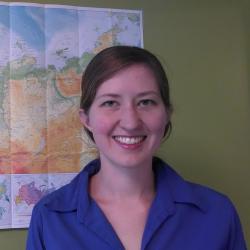There are three major prepositions of location: at, on, and in. Using them correctly is essential to good communication in both academic English and daily conversation, and yet it can be difficult to tell which preposition is needed in a given situation. In this post, I’ll try to shed some light on how to use prepositions of location like a native.
“At” is used most commonly for general locations, street addresses, businesses, and events. For example, we say “at school,” “at church,” “at Harrod’s,” and “at the conference.” One mistake I see students make often is using “on” to talk about events: *on the party, *on the conference, and so on (the asterisk (*) shows that the sentence is not grammatically correct). We also use “at” to talk about complete addresses with street numbers: “Obama lives at 1600 Pennsylvania Avenue.”
“On” is typically used literally—that is, most instances of it have to do with literally being on top of something. There are, however, some set instances that you should know to describe locations correctly. First of all, in the US we use “on” to talk about streets: “Have you seen the new gym on Pine Street?” In the UK, it’s more common to use “in” in this instance. Although on the TOEFL American grammar would be preferable, there’s not really anything wrong with using “in” in this case—it just may sound a little strange to an American. Here are some other common phrases with “on”:

“In”, of course, is usually used for location literally within an object. In keeping with this, we use it for larger locations: neighborhoods, cities, countries, continents. “We saw Snowden in Moscow.” “The World Cup was held in Brazil.” “I live in the city center” “I live in Asia.” Note that although we typically talk about neighborhoods with “in”, that’s not the case for cities that divide themselves up into sides (north side, west side, and so on)–in these cases you would use “on”, as described above.
Using articles with locations
When you’re talking about a common noun (i.e. a noun that’s written with a lowercase first letter), you usually have the option of using “the” or no article at all. The difference between “at school” and “at the school” is very slight, but it’s still noticeable to native speakers. Use the definite article when your sentence (or the context) provides other information to indicate specifically which school you mean; if you’re just talking about the place as a general location, omit the article. Here are some examples to illustrate what I mean:

The only major exception to this is when talking about hospitals; in this case, the difference is regional rather than semantic. Americans usually say “at the hospital” or “in the hospital;” Brits, on the other hand, prefer to say “in hospital.”
If you want to know more about prepositions and articles, be sure to check out our free lessons on English grammar. 🙂






Leave a Reply